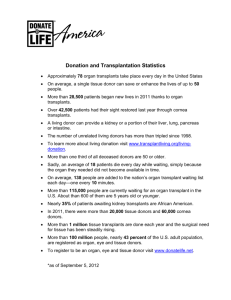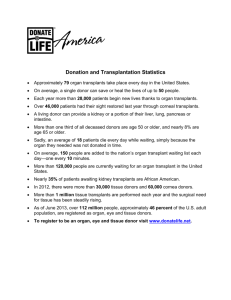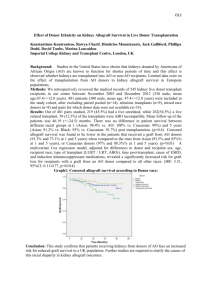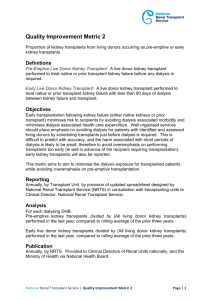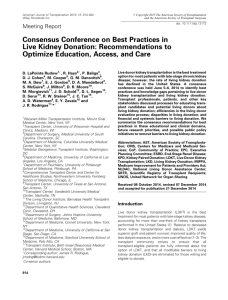Evaluation of Living Kidney Donor pathway to maximise capacity
advertisement
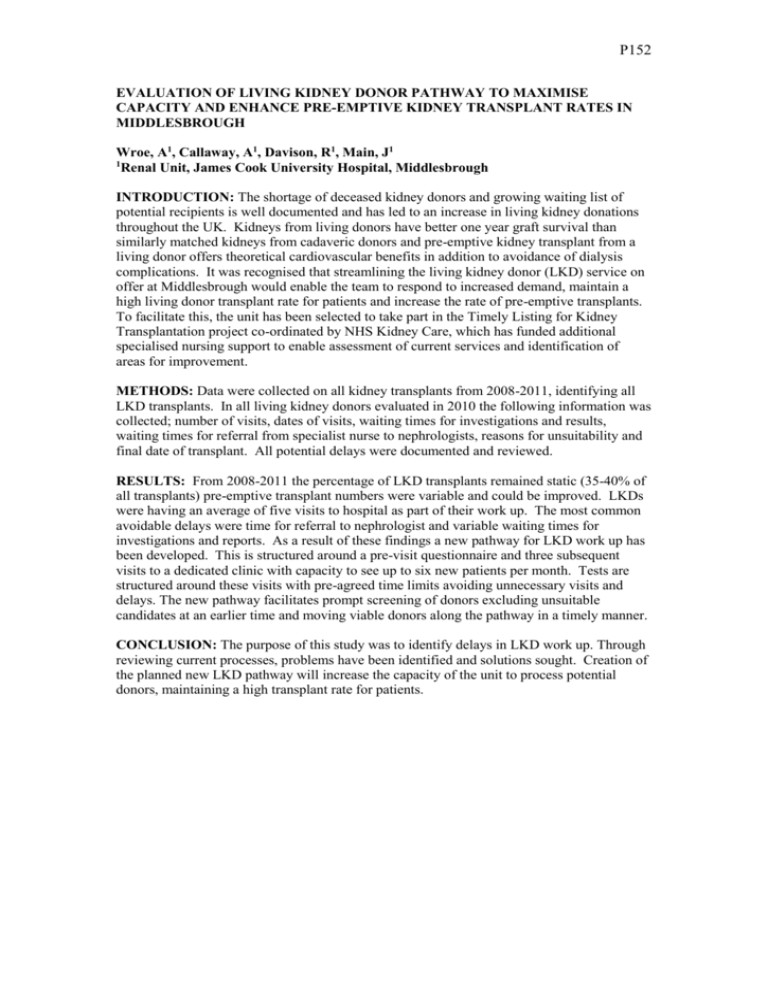
P152 EVALUATION OF LIVING KIDNEY DONOR PATHWAY TO MAXIMISE CAPACITY AND ENHANCE PRE-EMPTIVE KIDNEY TRANSPLANT RATES IN MIDDLESBROUGH Wroe, A1, Callaway, A1, Davison, R1, Main, J1 1 Renal Unit, James Cook University Hospital, Middlesbrough INTRODUCTION: The shortage of deceased kidney donors and growing waiting list of potential recipients is well documented and has led to an increase in living kidney donations throughout the UK. Kidneys from living donors have better one year graft survival than similarly matched kidneys from cadaveric donors and pre-emptive kidney transplant from a living donor offers theoretical cardiovascular benefits in addition to avoidance of dialysis complications. It was recognised that streamlining the living kidney donor (LKD) service on offer at Middlesbrough would enable the team to respond to increased demand, maintain a high living donor transplant rate for patients and increase the rate of pre-emptive transplants. To facilitate this, the unit has been selected to take part in the Timely Listing for Kidney Transplantation project co-ordinated by NHS Kidney Care, which has funded additional specialised nursing support to enable assessment of current services and identification of areas for improvement. METHODS: Data were collected on all kidney transplants from 2008-2011, identifying all LKD transplants. In all living kidney donors evaluated in 2010 the following information was collected; number of visits, dates of visits, waiting times for investigations and results, waiting times for referral from specialist nurse to nephrologists, reasons for unsuitability and final date of transplant. All potential delays were documented and reviewed. RESULTS: From 2008-2011 the percentage of LKD transplants remained static (35-40% of all transplants) pre-emptive transplant numbers were variable and could be improved. LKDs were having an average of five visits to hospital as part of their work up. The most common avoidable delays were time for referral to nephrologist and variable waiting times for investigations and reports. As a result of these findings a new pathway for LKD work up has been developed. This is structured around a pre-visit questionnaire and three subsequent visits to a dedicated clinic with capacity to see up to six new patients per month. Tests are structured around these visits with pre-agreed time limits avoiding unnecessary visits and delays. The new pathway facilitates prompt screening of donors excluding unsuitable candidates at an earlier time and moving viable donors along the pathway in a timely manner. CONCLUSION: The purpose of this study was to identify delays in LKD work up. Through reviewing current processes, problems have been identified and solutions sought. Creation of the planned new LKD pathway will increase the capacity of the unit to process potential donors, maintaining a high transplant rate for patients.



